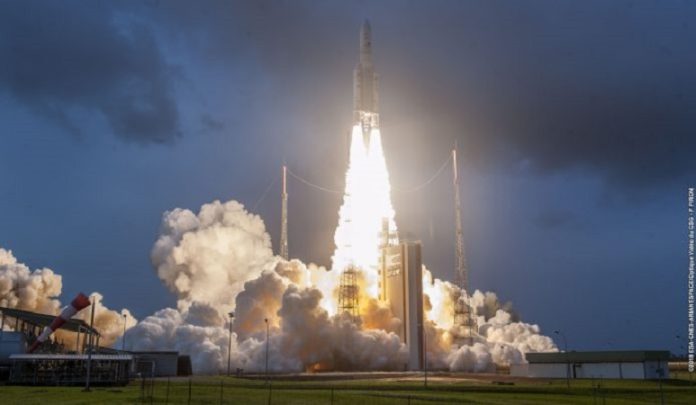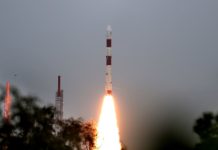On Tuesday, 4 December, Arianespace launched GSAT-11 for India’s space agency ISRO, and GEO-KOMPSAT-2A for South Korea’s space agency KARI, successfully deploying both satellites into Geostationary Transfer Orbit (GTO).
The launch took place using Arianespace’s heavy launcher, Ariane 5, from the Guiana Space Center in French Guiana.
This was Arianespace’s 10th mission of 2018, and the sixth Ariane 5 mission of the year. Yesterday’s launch saw the Ariane 5 loft a total of 10, 297 kg, the combined liftoff mass of both satellites.
GSAT-11 satellite was built by ISRO on the new-generation I-6K satellite bus, and has a mass of 5,854 kg and a design life of 15 years. The satellite, which is the heaviest ISRO has built to date, will be positioned in the geostationary orbit at 74° East, covering India and nearby islands. It carries a multi-spot beam antenna, with 32 Ku-band beams and 8 Ka-band hub beams. A next-generation High Throughput Satellite (HTS) with a data rate of 16 Gbps, GSAT-11 will provide connectivity to India and will demonstrate new technologies.
GEO-KOMPSAT-2A was built by KARI and has a launch mass of 3,507 kg and a design life of 10 years. The satellite will cover the APAC region, at 128.2° East, and is a geostationary Earth Observation satellite meant to monitor weather and climate change. Its two main payloads are an AMI (Advanced Meteorological Imager) and a KSEM (Korean Space Environment Monitor). A second Earth Observation satellite, GEO-KOMPSAT-2B, is expected to launch in 2019, also using the Ariane 5.
Stéphane Israël, Chief Executive Officer of Arianespace, said: “With this 10th launch of the year, Arianespace is glad to support two major space agencies: ISRO of India and KARI of South Korea. We are very honored by the renewed confidence of ISRO. GSAT-11 is the heaviest communications satellite ever built by the agency, and the first to be carried in the upper position on Ariane 5″.







